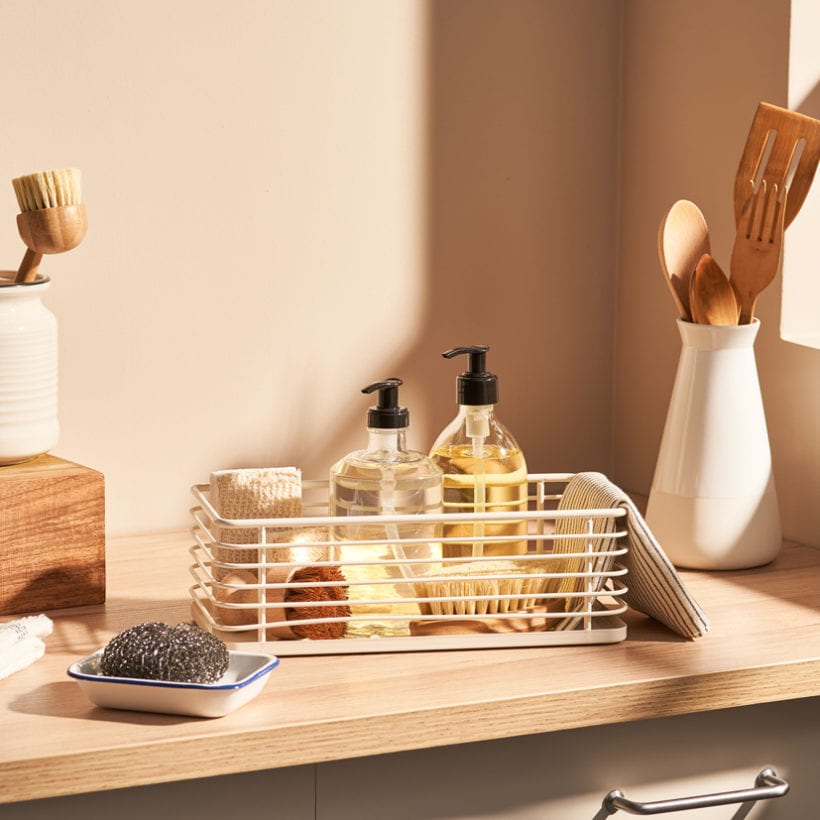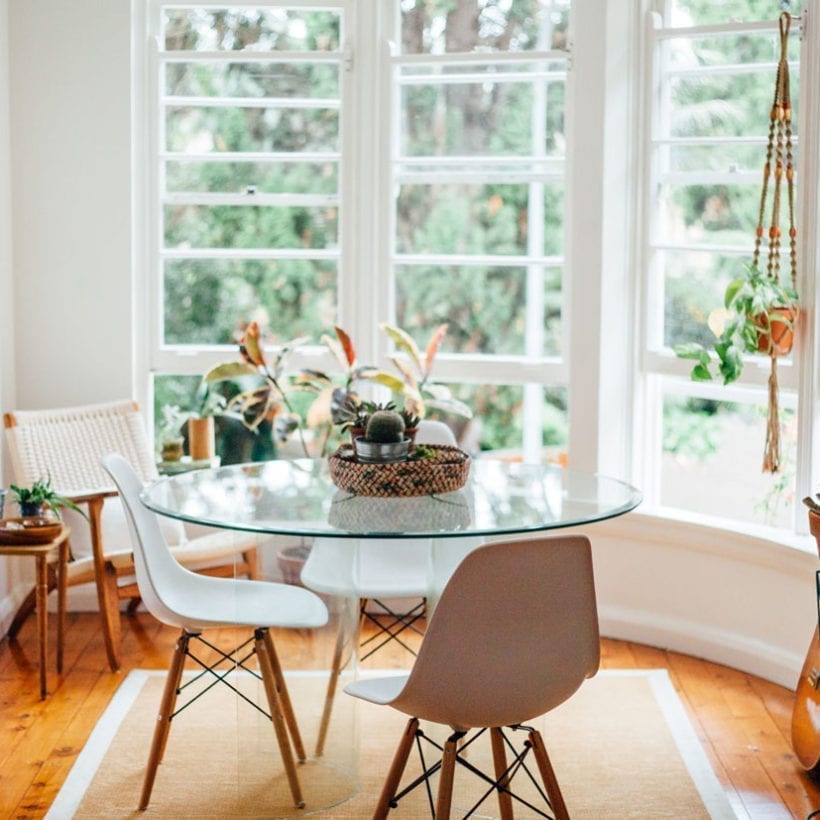When most people think about decluttering, it’s usually tied to those fresh first few days of spring. However, there’s no reason to limit your cleaning and organization marathon to one season only. In fact, if you only sort and donate your items once a year, you may find yourself overflowing with stuff you don’t need — and feeling overwhelmed. As professional organizer and podcast host Sarah Karakaian puts it, life is fluid, so your organizational systems should be, too.
No matter what part of your home you’re tackling — your office, kitchen, closet — items ebb and flow. “If you limit decluttering to just once a year, you’re making a task that can be quite simple at its core seem insurmountable,” she continues. “Just like decluttering in the spring helps you put away your winter items and toss or donate items you won’t need for next year, setting time aside to declutter in the fall helps you shed the spring and summer items that you have outgrown or will no longer use next year. “
By investing in an autumn cleaning practice, you’ll keep your home tidier and happier. Here, expert tips for getting started as summer winds down:
Be honest about what you need to keep.

When you start sorting your items into three piles — keep, donate or toss — you could begin to have decision fatigue. Will you miss that bathing suit you haven’t worn in three years? And what about those cute sunshine placemats that you always mean to pull out for your summer BBQ… but never do? It can be challenging to let go of things you love, but if you never use them (or you haven’t in quite some time), Karakaian says they are simply taking up space that could be better utilized.
If you’re on the fence about donating or tossing something, write down your reasons for keeping it. The act of having to put into words why you’re struggling to let go could help you work through your emotional attachments and give you freedom. And hey, if you can justify it, then it’s yours to store until next season.
Give everything a place.
The act of tidying up not only involves ridding your home of items you’re no longer using, but it challenges you to think critically of everything you own. Each week, tackle a new space so it doesn’t become too intense. As you organize everything, give it all a home. So, in your office: every notebook, coaster for your coffee, filing system, hand lotion, keyboard, pen holder, and photo frame should be in its spot. All of your shoes, scarves, belts and other accessories should follow the same routine in your closet. When everything has its area, it’s easy to tell when a mess is piling up.
“It’s important to designate homes for everything you own. This way, you can declutter on a more consistent basis making your bi-yearly decluttering task easier to tackle and, dare we say, enjoyable,” Karakaian says.
Set aside 10 minutes each morning to declutter.

During the summer, you and your colleagues are all taking vacations and enjoying Friday afternoons off. However, once we enter the Autumn season, many companies are focused on end-of-year goals, and everyone feels like they’re back in the grind of deadlines, meetings and responsibilities. This can make the act of decluttering and cleaning feel like an extra full-time job on top of the one you already have. Karakaian suggests setting aside 10 (or 15, if you can spare it) minutes each morning to do a sweep to make it more digestible. “Walk throughout your spaces and make sure everything is at least put-away,” she recommends. “There is something incredibly effective about actually touching the items you own in the process of putting them in their place. When you go to put the item away, you can ask yourself, ‘Is this something I/we value and need?’”
By giving time daily, you take away the added pressure or stress of getting through a to-do list on the weekend when you should be decompressing from work.
Give your kitchen a deep clean.
If you’re heading back into the office and planning on bringing your lunch, or you’re a parent who needs to feed your kiddos, it’s worth giving your kitchen a once-over. Meal prepping of any sort can become complicated when you’re struggling to find essential items. To make it easier, use the autumn season as a time to declutter and organize your pantry. All expired items should be thrown out, and any unopened cans or boxes should be donated. Make sure it’s properly secured and sealed with everything you’re keeping to prevent mold or contamination. Then, it’s time to tidy up everything you’re saving, suggests Robbie Randolph, an organizational expert and real estate agent.
He recommends regularly placing items you’ll need — like snacks, pasta or rice — in an easily accessible place. Place cans in baskets and label each with the continents. Also, keep a record of everything you have so you don’t buy more than you need at the grocery store. “I use the Reminder app on my iPhone to keep a running grocery list. Or you can mount an erase board on the pantry wall and scribble in what you need as you run out, or have the kids do it,” he recommends.
Color code your seasonal storage.
Since you’re now creating a more regular practice of deep cleaning and decluttering, go the extra mile and make your organization not only practical but colorful. Karakaian recommends storing your spring and summer belongings in totes and containers that are green. Then, place your fall and winter must-haves in storage containers that are navy blue. Since you might have quite a few holiday decorations, give them their own bin, and make them red. This lets you glance at your closet or basement quickly and know exactly which containers contain seasonal items. Thus, you’ll create less mess when you decide to jet-set to a beach in the middle of winter and need to locate your flip-flops!
We only recommend products we have independently researched, tested, and loved. If you purchase a product found through our links, Sunday Edit may earn an affiliate commission.







